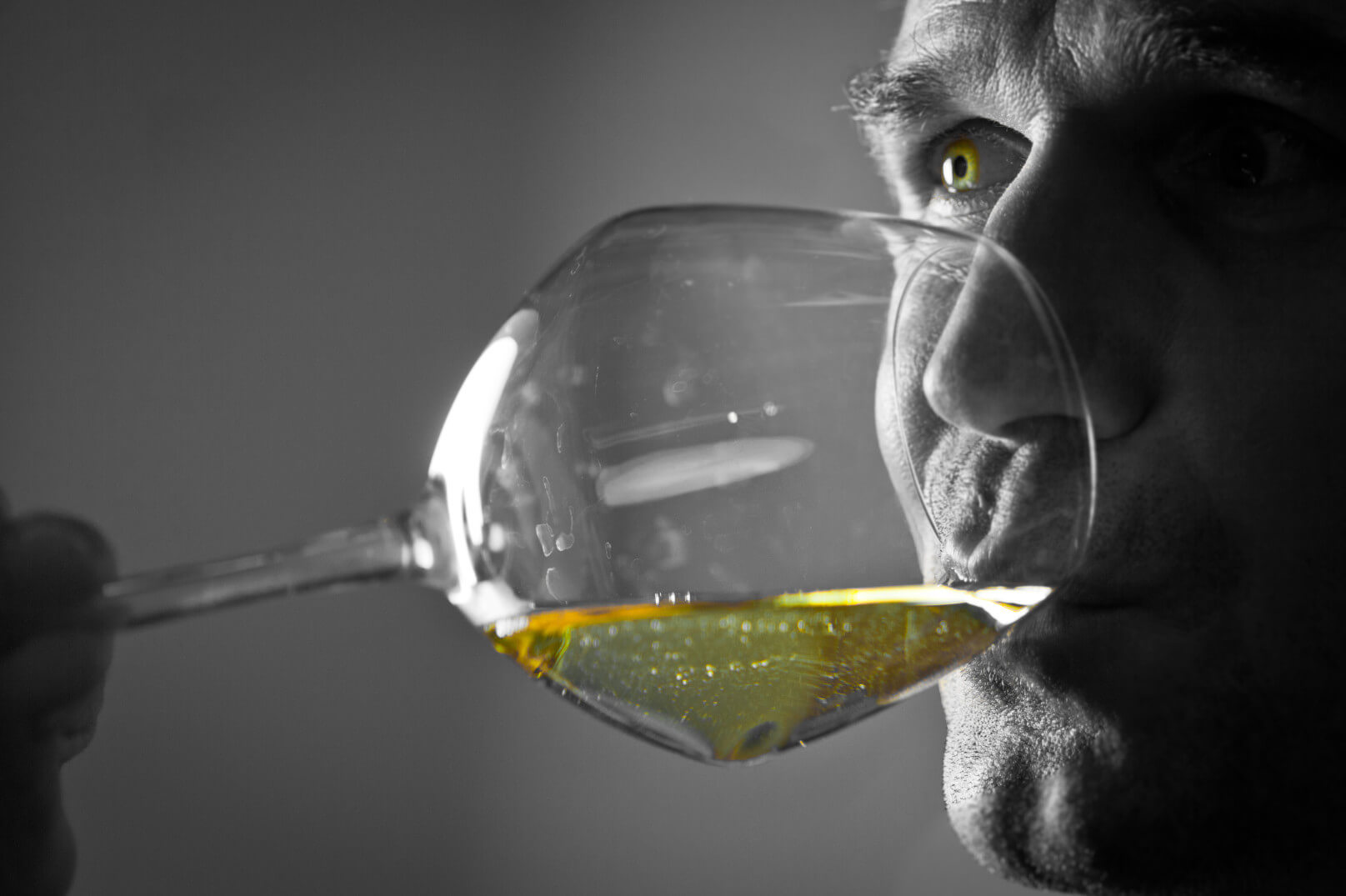
Wine-making workshop
learn all about wine… and explore your palate
L’École des vins (Wine School) was opened by Inter-Rhône in the beautiful building that was formerly the Banque de France – the Carré du Palais located on the Popes’ Palace Square. Every week, l’École des vins offers wine tasting workshops.
Duration:
2 hours
Price:
de 35€ to €
Type:
Workshop
Parking :
paid
An essential and unmissable part of French culture
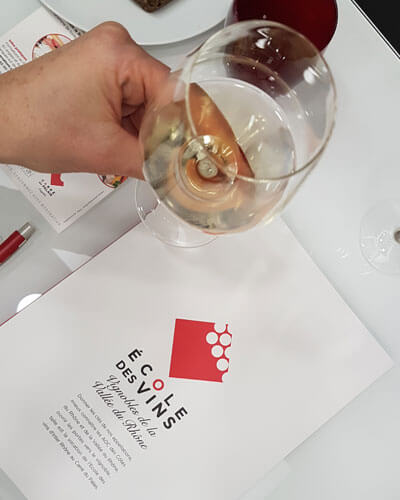

Did you know?
White wine grape varieties from the Côtes du Rhône include: white Grenache, white Muscat, Marsanne, Clairette, Picardan, Picpoul blanc, Ugni blanc, Roussanne, Maccabeo, Bourboulenc, Vermentino ou rolle, and Viognier.
Whether you’re a wine enthusiast or you’re simply curious about the world of wine, these small practical workshops allow you to explore the Rhône valley vineyards and to gain a bit of expertise when it comes to grape varieties. This is the ultimate aim of École des vins at the Carré du Palais – just a stone’s throw from the famous Popes’ Palace.
So let’s go – come for a discovery workshop dedicated to white wine, the perfect opportunity to gain extensive knowledge on the grape varieties of this wine colour!
Theoretical basics…
The workshop takes place in the room dedicated to l’École des vins.
Different posters adorn the walls, sometimes on grape varieties from the Rhône Valley, sometimes the variety of their aromas. The tables are laid with glasses ready to be filled with samples of nectar, a wine spittoon… and material to guide us in this tasting adventure.
Everything is in place. The workshop can begin.
Our instructor begins with the Rhône valley grape varieties and their distinctive features, which constitute the many riches of these appellations around the north/south duality: clay-limestone soil, granitic or stony; slope exposures; reliefs and climate etc.
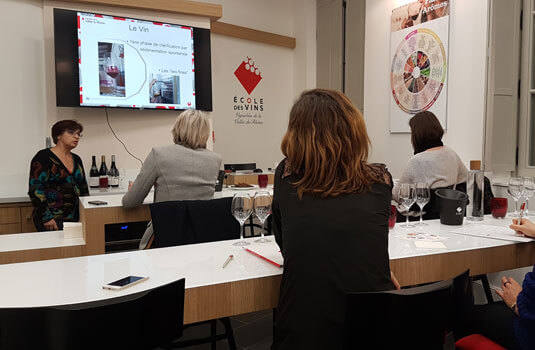

Did you know?
Across 70,000 hectares, the 48 appellations of the Côtes du Rhône are spread across both sides of the river and offer a variety of grape varieties which have made these appellations famous.
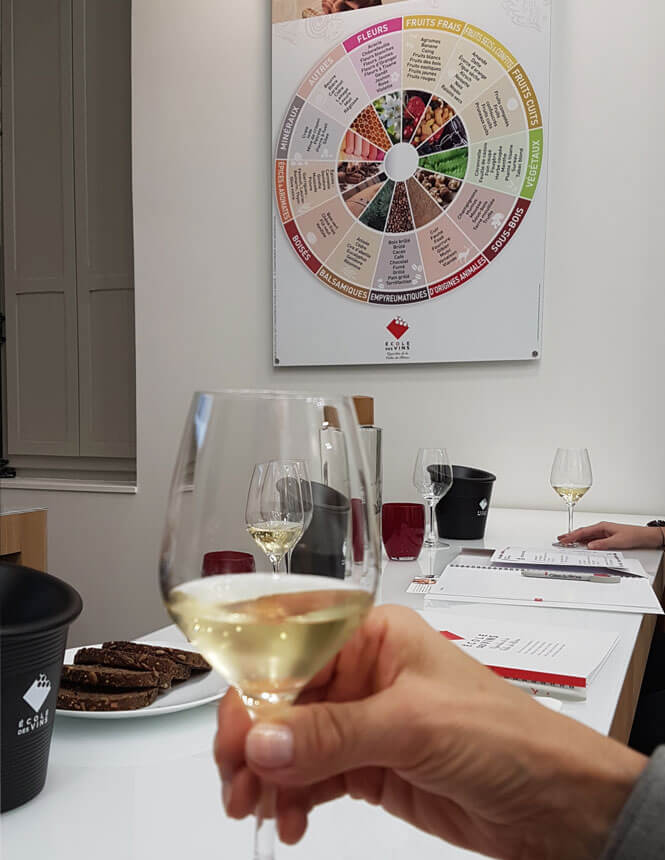
…to the art of the sensory experience
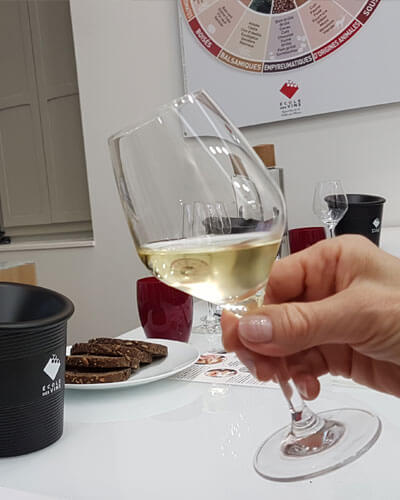

An expert’s handiwork
Whatever the wine, the ritual won’t change: observe, turn the liquid in the class to bring out the aromas and smell them, then let the wine linger in your mouth – all the while mixing it with a bit of air in order to really catch all of the aromas.
The moment of tasting the first selected wine has already arrived.
Salvador Dali said “He who knows how to taste no longer drinks wine but tastes secrets…” and what secrets you will discover when learning how to see and taste!
The art of tasting is an organoleptic experience, using 3 or even 4 of our senses.
Naturally, we immediately think of sight for describing the colour, smell for identifying the perfume, and taste for appreciating the acidity of the wine. But according to Nathalie, touch is just as important. Different from the work of the taste buds when tasting, it rather consists of “feeling” the wine with the tongue – the density and body or fullness of the wine.
Enrich your vocabulary!
A document will be at hand to help you in the different stages of the tasting with visual, olfactory, and gustatory descriptions of the wine. Is it a young wine? With a dense tear? What type? Fruity, floral, mineral etc.? Does it have an average intensity and frank condition? Is it a complex wine? Are its flavours iodic or soft? And its aromas – are they short-lived or do they last a long time in the mouth?
To help you, Nathalie will also give you a small bottle of aromas to sense as a way of stimulating your nose.
As you can imagine, without the help of this precious glossary specific to the delightful topic of wine, you would be very stuck on how to describe a range of tastes and senses!
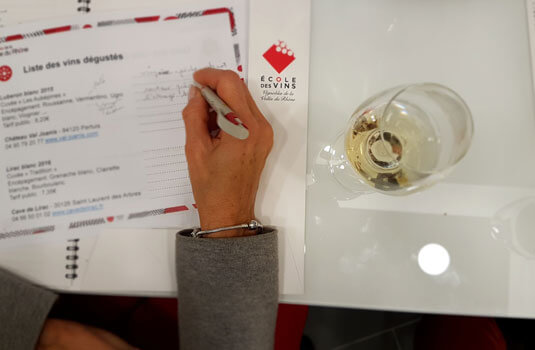

Did you know?
Time to talk about the legs or “tears” of the wine…!
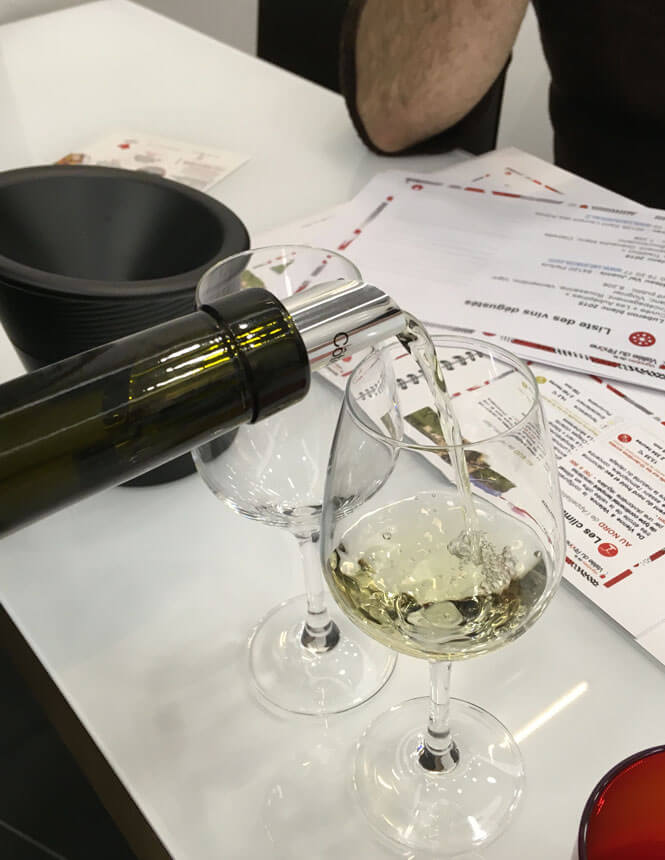
5 grape varieties reveal their secrets
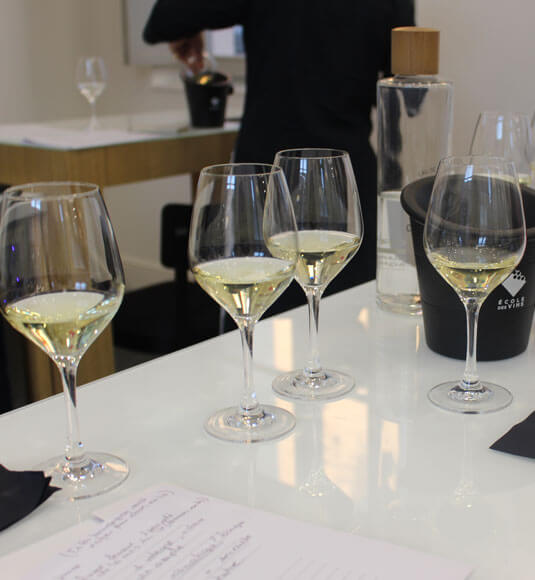

To go even further
There are many different types of workshops on offer at l’École des vins throughout the year to turn you into a wine expert!
Take it in turns to explore 5 wines with different white grape varieties: a Côtes du Rhône, cuvée 100% ‘Roussanne’ from Château du Trignon’s estate in Gigondas; a Duché d’Uzes from Domaine Deleuze Rochetin in Arpaillargues; a Saint Peray; a Condrieu cuvée ‘Résurgence’ from Domaine de la Pierre Blanche; and to finish, a Muscat de Beaumes de Venise from Domaine de la Ligière.
A real delight.
And to end the workshop, a piece of chocolate to try from Muscat de Beaumes de Venise. The perfect blend at Carré du Palais…